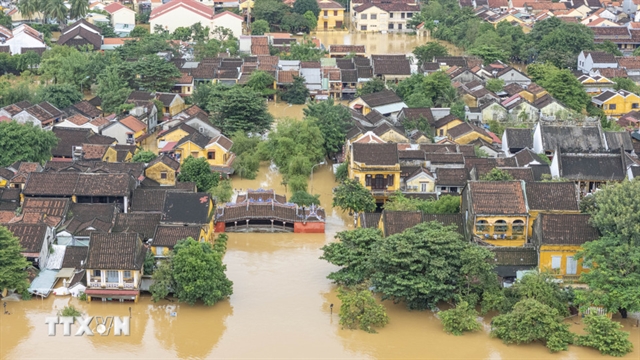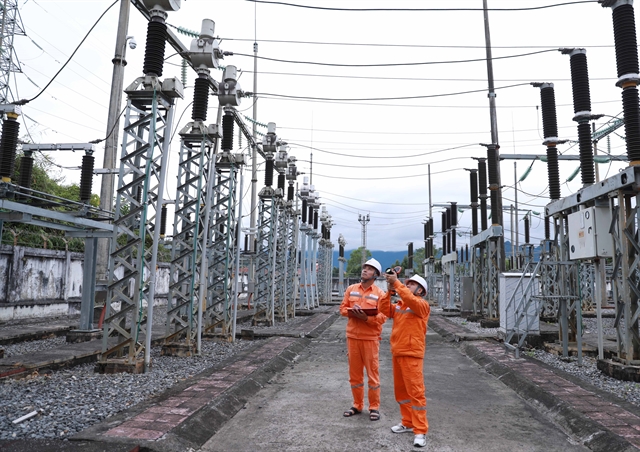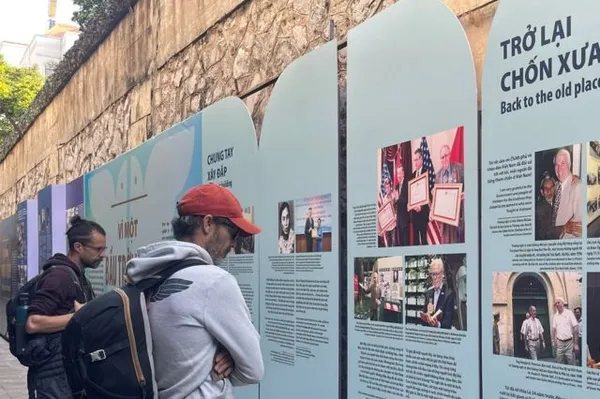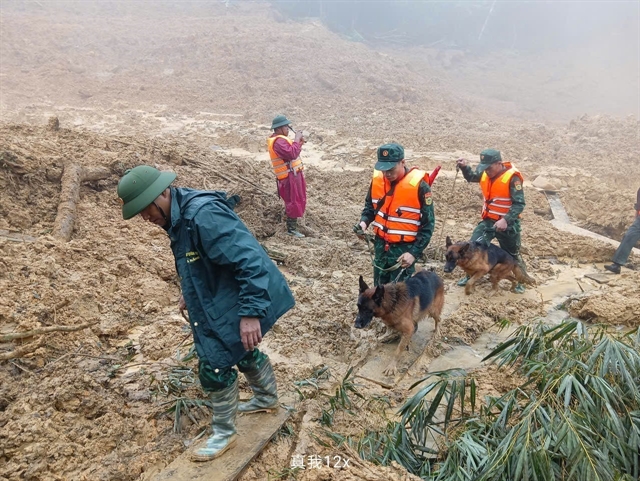 Society
Society

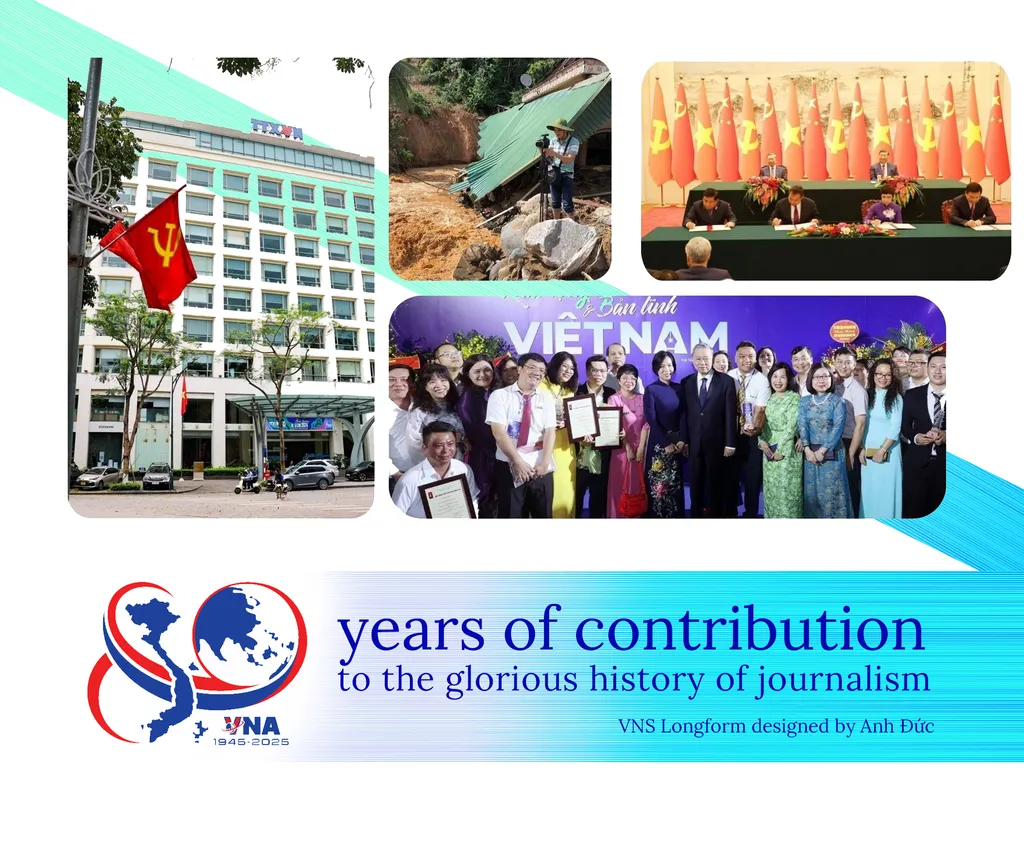 |
HÀ NỘI — Throughout Việt Nam’s 100-year journey of revolutionary journalism (1925–2025), the Vietnam News Agency (VNA) has stood on the front line of the ideological and cultural struggle, playing a vital role in providing official information, shaping public opinion, and affirming national prestige on the international stage.
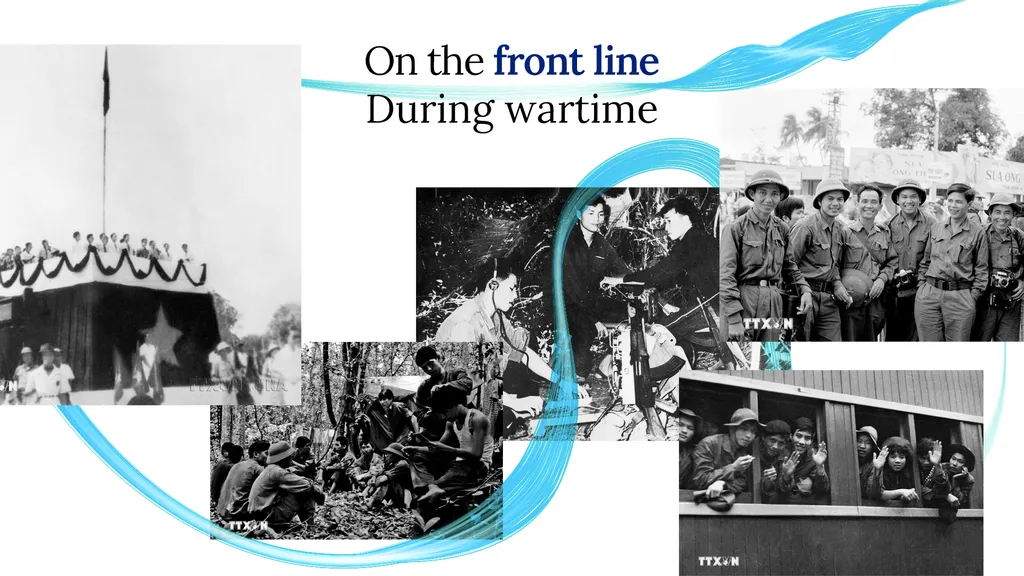 |
The history of Vietnamese revolutionary journalism is inseparable from a key event on 21 June 1925, when Leader Nguyễn Ái Quốc founded the newspaper Thanh Niên, the first publication to advance revolutionary ideals along proletarian lines.
From that historic milestone, revolutionary journalism in Việt Nam has charted a distinctive course, always closely bound to the struggle for national independence and the building and defence of the country.
Over the past century, VNA has remained a steadfast force on the ideological and cultural front, entrusted with the mission of providing official information, guiding public opinion, and upholding Việt Nam’s standing on the global stage.
VNA was born in a unique context. On 15 September 1945, just 13 days after President Hồ Chí Minh proclaimed the Declaration of Independence, the Vietnam News Agency (then known as Việt Nam Thông Tấn Xã) broadcast the full text of that historic declaration in three languages, Vietnamese, French and English, announcing the birth of the Democratic Republic of Việt Nam and the list of the Provisional Government.
This was VNA’s very first news bulletin, a landmark event marking the establishment of a state-owned news agency charged with carrying the voice of the nation. From that moment, VNA has been not only a journalistic institution but also a strategic information body, accompanying the country through every historical turning point.
On 19 December 1946, VNA reported across the country and to the world the news that French colonialists had broken their commitments and reignited the war of aggression in Việt Nam, alongside President Hồ Chí Minh’s Call for National Resistance.
Throughout the nine-year resistance war against French colonialism, VNA endured immense hardship. It relocated 21 times to evade enemy pursuit and bombing, yet ensured a continuous flow of information to the Party and to Uncle Hồ. The victory at Điện Biên Phủ in 1954 marked a resounding triumph of the Vietnamese revolution. On 7, 8 and 9 May that year, VNA broadcast the news of French General De Castries and the entire command being captured, reports that electrified both domestic and international opinion.
During the resistance war against the US and the construction of socialism in the North, VNA missed no significant domestic or international event, even in the fiercest moments of war.
VNA journalists were present in the most challenging and dangerous areas, capturing heroic images of the army and people in battle. No battlefield, no direction of advance and no combat zone was without a VNA journalist. Many of VNA’s photographs and reports have become historical witnesses.
Not only close to the battlefield, VNA reporters also remained with the people. They immersed themselves in the lives of compatriots in liberated areas and in every resistance village.
Short but emotional reports and black-and-white photos of evacuated children, elderly militia members and students studying in bomb shelters touched hearts, serving both as vivid historical records and as powerful spiritual weapons to inspire the entire population to fight and win.
VNA was also the main information agency covering the delegations of the Democratic Republic of Việt Nam and the Provisional Revolutionary Government of the Republic of South Việt Nam during their diplomatic negotiations with the US and the Sài Gòn regime at the Paris Conference on Việt Nam. These efforts supported the negotiations, shaped positive public opinion at home and abroad, and contributed to the historic victory of the Spring of 1975.
On April 30, 1975, VNA had the honour and pride of broadcasting the historic news and images of the great victory of the Spring 1975 General Offensive and Uprising, which brought national reunification and opened a new era of independence, freedom, unity and socialist construction throughout the country.
Contributing to that victory, nearly 260 VNA staff, reporters and employees heroically sacrificed their lives. Many lost parts of their bodies on the battlefield, and not a few continue to suffer long-term illnesses due to exposure to toxic chemicals.
This is a significant number for a press agency, reflecting both the fierceness of the war and the dedication of revolutionary journalists to the cause of national liberation and reunification.
VNA’s contributions during wartime helped establish a model of wartime journalism that was resilient and humane, rich in epic spirit yet close to the breath of daily life.
 |
After national reunification, the Vietnam News Agency (VNA) swiftly adapted to the new demands of peacetime. Although the sound of bombs and bullets had faded, the information front remained no less intense or complex as the country embarked on its path of renewal and international integration.
In the years immediately after 1975, VNA concentrated on rebuilding its organisation, broadening both its domestic and overseas correspondent network, and shifting from manual to modern methods of news production.
Its bulletins captured the realities of daily life and the nation’s reconstruction efforts, while simultaneously affirming Việt Nam’s sovereignty, status and image on the international stage.
Since the Sixth National Party Congress in 1986, which launched the policy of renewal, VNA has become a principal source of official information, delivering reliable data to the Party, the State, and to domestic and international media alike.
Its news reports, analyses, photographs, features and videos are disseminated through both traditional and digital platforms, shaping public opinion and countering misinformation.
Today, VNA is recognised as “the national news agency, the country’s key multimedia communication body, responsible for publishing official documents and information from the Party and the State; providing material to serve Party leadership and State management; disseminating information for the media, the public and a wide range of domestic and international audiences; announcing the State’s official viewpoints on current affairs; correcting inaccurate information; and, when necessary, rejecting and refuting distorted narratives.”
The Vietnam News Agency (VNA) produces the most diverse range of journalistic products in the country, with more than 60 different media formats.
VNA operates a nationwide network of reporters and maintains a presence in almost all key global locations, with 63 domestic bureaus across all provinces and cities and 30 overseas bureaus on five continents. Wherever information flows, VNA is there.
With reporters and editors following socio-economic developments closely, VNA is present in every environment: from bustling urban centres to remote villages, from international conferences to disaster zones and epidemic hotspots. The image of the versatile, multi-skilled VNA journalist has become well known among colleagues, particularly those working abroad.
As the country’s leading multimedia press agency, VNA continues to expand, prioritising information orientation and serving as a strategic communication channel that builds social consensus to support the successful implementation of Party and State policies. It also acts swiftly to counter and refute false or hostile narratives.
For major information campaigns, VNA organises topical events, highlights content across platforms, and develops integrated specialised websites such as https://daihoidang.vn, https://baucuquochoi.vn, https://nvsk.vnanet.vn, and https://chinhsachcuocsong.vnanet, while strengthening ideological protection through http://happyvietnam.vnanet.
Beyond Vietnamese-language content, VNA is among the few agencies that actively promote international communication in English, Chinese, French, Spanish and Russian, helping to widely project the image of a peaceful, reforming and globally integrated Việt Nam.
VNA also maintains the nation’s largest photo archive, with one million invaluable negatives. These include tens of thousands of images documenting the revolutionary struggle, more than 5,000 photos of President Hồ Chí Minh, and thousands capturing the life and culture of Việt Nam’s 54 ethnic groups.
This archive is a priceless national treasure, playing a vital role in preserving historical memory and inspiring younger generations to learn from the country’s revolutionary traditions.
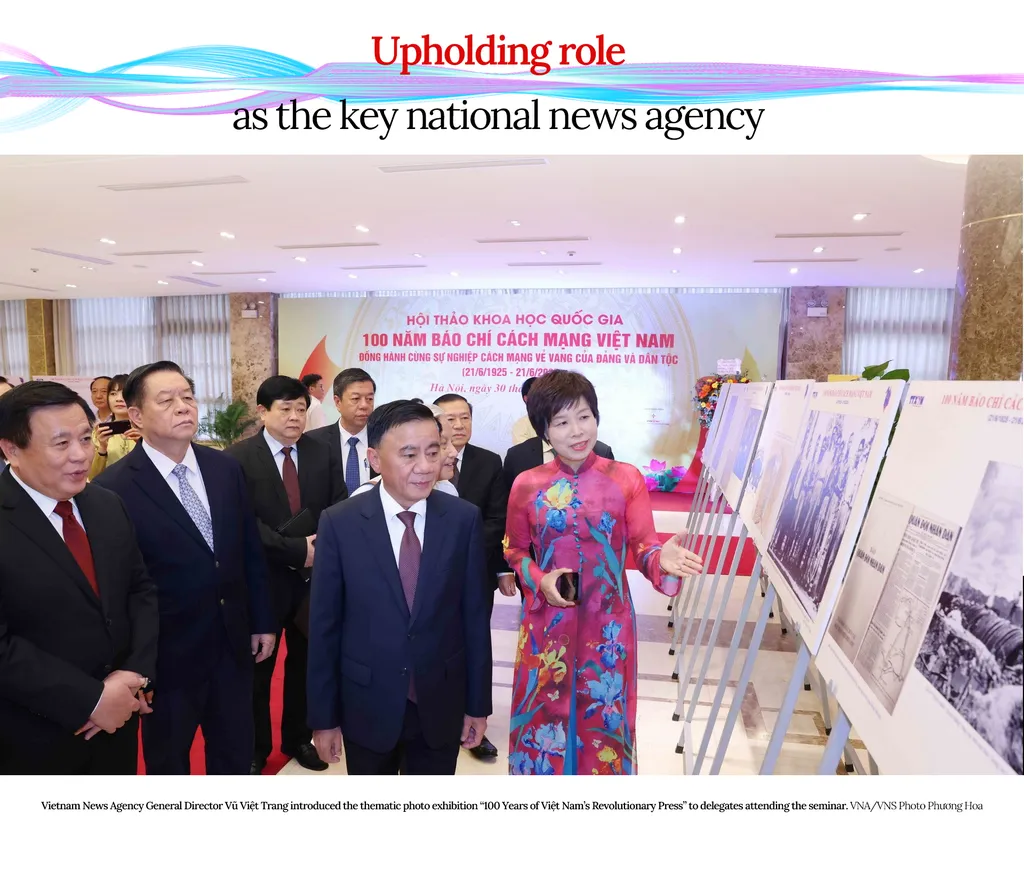 |
In the digital age, the Vietnam News Agency (VNA) has taken the lead in applying modern media technologies, adopting newsroom convergence, and developing multimedia platforms to meet new communication trends and serve diverse audiences.
As early as 1998, when Việt Nam first connected to the global internet, VNA was among the country’s pioneering media organisations to launch electronic information sites.
With its proud tradition, firm political stance, and spirit of renewal, VNA continues to affirm its position as the mainstream source of official information and a pillar of the national press system, ready to accompany the nation into a new era of development.
In 2017, the agency launched infographics.vn, becoming a pioneer of data journalism in Việt Nam. It has since introduced a wide range of innovative information products and has begun experimenting with artificial intelligence in news production, including multilingual news readers and automated anchors, which have already proved effective in practice.
On the infrastructure side, VNA has shifted from producing separate modules for each type of media to a multimedia, multi-platform model, strengthening the integration and interconnection of its information products. Content linkage and cross-promotion have expanded the agency’s reach and amplified the impact of its communication.
The persistent digitisation of its archival material has enabled VNA to build a rich, multi-format digital database, laying the foundation for further advances in multimedia journalism and unlocking the added value of data-driven reporting.
VNA’s breaking news products are increasingly present in international news bulletins, while modern storytelling formats such as megastories, longform articles, and interactive graphics combine text, images, and data to offer readers and viewers a richer experience. On its news portal, integrated text, images, and videos enhance accessibility and usability. Its converged newsroom model underpins the production of multi-format content across diverse media platforms.
As Việt Nam’s revolutionary press approaches its centenary and VNA celebrates its 80th anniversary, the agency shoulders new responsibilities in a new era. In this historic year of national milestones, 80 years since the August Revolution, National Day on September 2, and the series of Party congresses leading to the 14th National Congress, VNA, as the national multimedia communication body and the country’s key external information agency, continues to convey messages about Việt Nam’s achievements after nearly four decades of renewal. At the same time, it reaffirms the role of revolutionary journalism in nation-building and development.
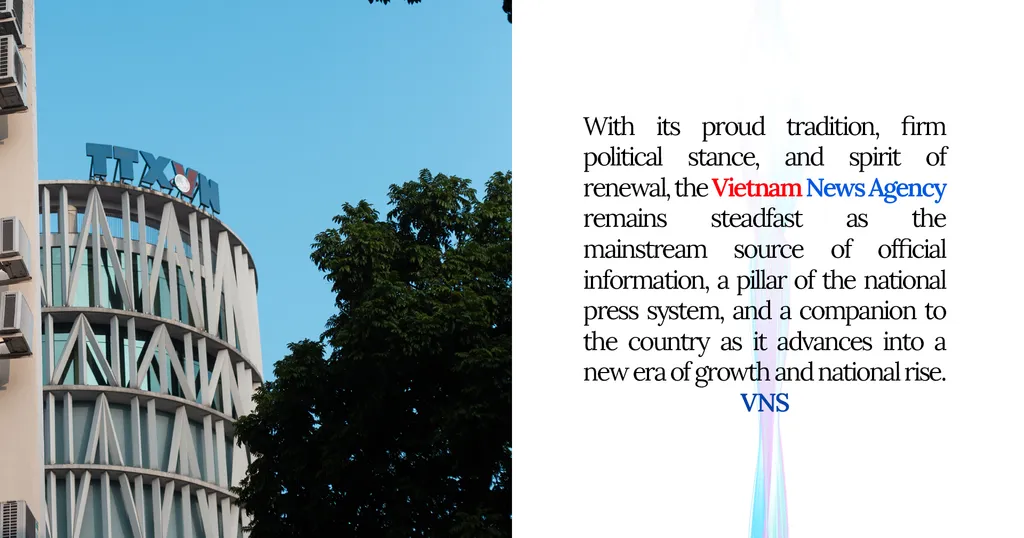 |

